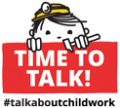Children and Work
Global estimates by the International Labour Organisation (ILO) and UNICEF indicate that in 2020 160 Million children worldwide were engaged in some form of work. While this already represents the first increase after years of shrinking numbers, those statistics predate the global COVID-19 pandemic, which, by causing school closures and economic recession, is considered to have forced many more children to take up work.
Children’s work as such is a complex issue. Children may work in dignified situations that are neither harmful nor exploitative, where they are able to learn technical, business and life skills, earn an income and realize their citizenship as active members of their community. However, children may also find themselves working in an unsafe and unhealthy environment, with little or no pay, where they are unable to pursue their education and other rights. Additionally, children are a very diverse group, with varying socio-economic backgrounds and identities as a result of class, race, gender, age, culture and religion. The type of work carried out by children, the hazards involved and the way in which these hazards can be mitigated all vary depending on the above factors – particularly when it comes to gender. Key to understanding this complexity is the participation of working children themselves.

It’s Time to Talk! – Children’s Views on Children’s Work
Thus, we wanted to discover what working children themselves had to say. The campaign & research project “It’s Time to Talk!”, which kicked off in 2016, consulted more than 1800 working children worldwide. The consultations were constructed based on a child-rights based approach, and their development and implementation were overseen by 11 Children’s Advisory Committees (CACs). In 2017, we were able to present the results of the consultation at a side event to the IV. Global Conference on the Sustained Eradication of Child Labour.
But even though consultation is a great start – collaboration is even better. Therefore we decided to focus on collaboration and cooperation with the CACs, and to support them in their own advocacy initiatives. This journey towards a collaborative and child-led approach to children’s work is continued in Dialogue Works.